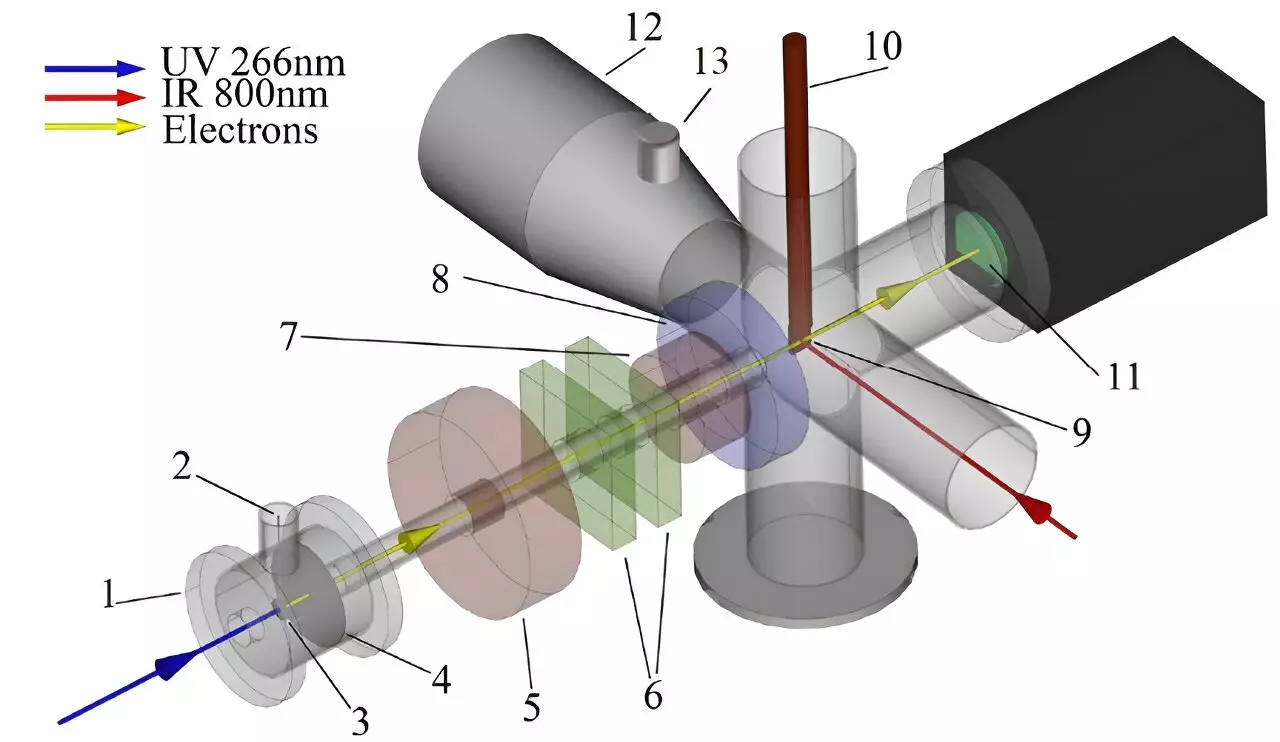The frontier of material science has taken a dramatic leap forward thanks to recent breakthroughs in laser-induced phase manipulation. Researchers at EPFL have demonstrated that, by simply altering the wavelength of light directed at magnetite, a well-studied magnetic mineral, they can induce dramatic and reversible changes in its electronic state. This capacity to command matter at the atomic level opens a new realm of possibilities for future technologies—especially in fields like electronics, data storage, and sensor development.
Instead of relying on traditional means like temperature or pressure to change the state of a material, scientists now leverage photonic energy to achieve rapid and precise control. This innovative approach shifts the paradigm from slow, equilibrium-based transitions to ultrafast, non-equilibrium manipulations that can access “hidden phases”—states that are usually inaccessible through conventional processes. The implications extend far beyond academic curiosity; they hint at a future where devices can respond almost instantaneously to external stimuli, dramatically enhancing performance and efficiency.
Understanding the Hidden World of Non-Equilibrium States
Classically, phase changes—like ice melting into water—are well-understood and predictable phenomena driven by thermal alterations. However, the behavior of materials when pushed out of equilibrium reveals a far richer tapestry of possibilities. Under non-equilibrium conditions, materials can assume metastable or “hidden” phases—intermediate states that are not typically part of their natural transition pathways. These phases are often fleeting and difficult to observe but can possess unique properties that are advantageous for technological applications.
Magnetite (Fe3O4), the focus of EPFL’s latest research, exemplifies this complexity. Known for its temperature-driven metal-insulator transition called the Verwey transition, it typically exhibits a well-defined phase change at around 125 Kelvin. But when stimulated with tailored light pulses, magnetite can enter transient phases with properties radically different from those in equilibrium. Manipulating these phases allows scientists not just to switch a material’s conductivity but to do so on timescales that are orders of magnitude faster than traditional methods.
Illuminating the Atomic Dance: How Lights of Different Wavelengths Affect Magnetite
The crux of the discovery lies in how specific wavelengths of laser light influence the atomic structures within magnetite. Using ultrafast electron diffraction, researchers observed that different photons incite distinct atomic responses. When irradiated with near-infrared light at 800 nm, magnetite experienced a rapid reconfiguration of its crystal lattice—from a monoclinic bundle into a cubic structure—within just 50 picoseconds. This structural shift corresponds to a transition toward a more metallic phase, effectively bridging the insulator-metal divide.
In stark contrast, exposure to visible light at 400 nm stabilized the material in its insulating configuration. Rather than disrupting the structure, the 400 nm photons facilitated an expansion of the lattice, reinforcing the monoclinic phase. The significance lies in the precision: by simply adjusting the wavelength of the excitation light, scientists can control whether magnetite adopts a conductive or insulating state, and do so at timescales that are incredibly fast.
This duality underscores an essential principle—light is not merely a tool for illumination but a powerful, tunable agent capable of unlocking diverse material states. The ability to evoke specific structural and electronic configurations through tailored optical stimuli could lead to next-level functionalities in electronic components.
Implications for Technological Innovation
The methodology pioneered by EPFL researchers transcends mere scientific elucidation; it sets a foundation for revolutionary applications. The rapid, reversible, and controllable switching between electronic phases promises a new class of ultrafast memory devices. Unlike traditional electronic memory that relies on sluggish charge tunneling or heating, phase-change materials manipulated by light could operate at speeds comparable to femtoseconds, vastly surpassing existing technologies.
Furthermore, the capacity to induce hidden phases opens new avenues for designing sensors with heightened sensitivity, capable of detecting subtle changes in environments by triggering specific structural responses. It also paves the way for programmable materials that can dynamically adapt their electronic properties, a feature crucial for quantum computing and advanced transistors.
Beyond practical applications, this research pushes the boundaries of fundamental physics, offering insight into how strongly correlated systems respond to external stimuli at the microscopic level. It challenges the conventional wisdom that material states are fixed or only controllable through slow, equilibrium processes. Instead, it portrays a future where matter can be manipulated with exquisite precision, almost as if writing a script directly onto the atomic framework.
Moving Forward: Challenges and Opportunities
While the promise of light-controlled phase transitions is enormous, translating laboratory insights into commercial technology remains a complex endeavor. Ensuring stability of the hidden phases, scaling the process for real-world applications, and integrating such materials into existing device architectures are hurdles yet to be surmounted. Nonetheless, the EPFL team’s work charts a compelling course for further exploration.
The real breakthrough lies in harnessing not just one but multiple wavelengths of light to command material properties at will. As techniques for ultrafast measurements become more refined, so too will our capacity to craft materials with bespoke responses tailored for specific functions. This nexus of photonics and material science embodies a future where speed, efficiency, and functionality converge at the atomic level—an era where the dance of electrons and nuclei is directed by the flicker of a laser pulse.
The ultimate aspiration is a universe of “smart materials” with built-in responsiveness to optical signals, transforming industries from computing to energy storage. Battery materials, superconductors, and magnetic data storage could all be revolutionized by this newfound ability to engineer non-equilibrium states rapidly and reliably. As research continues, the potential to reshape the landscape of electronics becomes clearer, promising a future where the boundaries of possibility are continually redefined by the power of light.

